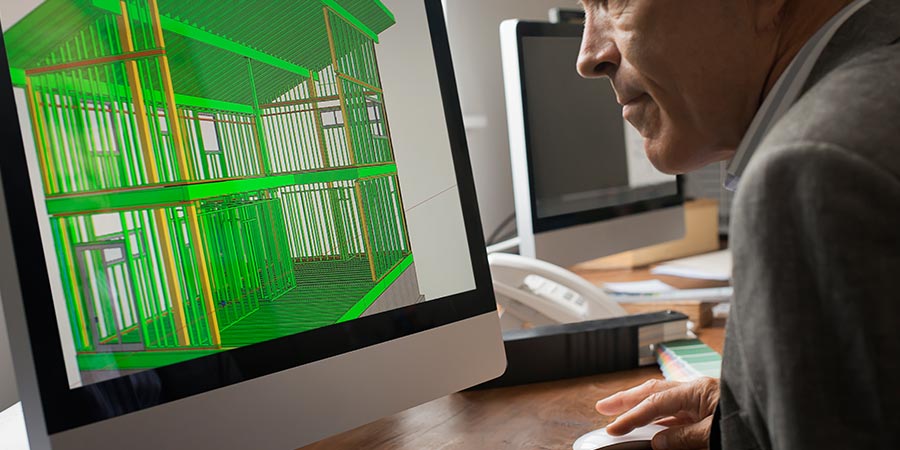
If you’ve ever walked onto a job site and asked yourself, “Why is that duct running straight through a beam?”—you’re not alone. Misaligned systems and last-minute fixes are still far too common in construction, and more often than not, the root cause can be traced back to coordination gaps during the design phase.
At Uppteam, we believe clash detection isn’t something you do once the models are “done.” It’s a proactive discipline that lives within the design process, and when done right, it saves teams weeks of rework and thousands of dollars in costs. That said, we also understand that not all projects are structured the same way. That’s why Uppteam also offers clash detection as a standalone, third-party quality check, ideal for firms seeking a final, independent validation before issuing drawings or moving into construction.
Whether embedded within your design workflow or performed as a final review, our clash detection support helps ensure your models can withstand real-world pressure.
Where Traditional Coordination Falls Short
Let’s face it: traditional coordination workflows weren’t built for the complexity of modern projects. With multiple disciplines designing in parallel—often from different offices, firms, or even countries—it’s no surprise that mechanical systems run into beams or light fixtures fight for ceiling space with sprinklers.
Manually overlaying drafts or hosting continuous coordination arrangements only gets you so far. Issues get missed. Reports become noise. And the outcomes—change orders, RFIs, deadline uncertainties—are tangible and measurable.
BIM coordination changes the equation. When done right, it empowers teams to identify, track, and resolve conflicts at the design stage—or catch them just before they become a costly field problem.
Clash Detection Doesn’t Need AI—It Needs Precision
The construction industry is seeing a significant increase in the use of AI. However, the truth is that effective clash detection isn’t about algorithms. It’s about discipline, experience, and a well-structured process.
At Uppteam, we utilize trusted platforms like Autodesk Navisworks, Revit, and Solibri to run smart, non-overwhelming clash tests.
Instead of flooding your inbox with thousands of low-priority clashes, we group and filter the results so you see only what matters most. A few hundred meaningful conflicts are far more actionable than a few thousand irrelevant ones.
Our checks are tailored to your project’s needs and stage. For instance, during the early design phase, we focus on spatial clearances and the overall system layout. As the project reaches detailed development—say, LOD 350 (Level of Development where systems are precisely modeled with connection points and dimensions)—our clash detection becomes more granular, catching complex interferences between MEP systems and structures that could derail the build later.
And suppose your in-house team has already completed design modeling. In that case, we can step in at the final stage to conduct a comprehensive, third-party clash audit before drawings are issued—a process many clients utilize as part of their quality assurance workflow.
Every report we deliver includes clear visuals, element IDs, and annotations, making it easy for your team to act, not just discuss.
How Uppteam Fits into Your Workflow
We’re not your GC, and we’re not trying to be. Uppteam is your behind-the-scenes BIM partner—quietly making your models better, your teams more aligned, and your deliverables more bulletproof.
Our support adapts to how you work:
Integrated During Design
We plug into your design phase, collaborating with your architects and engineers to coordinate as models evolve, resolving issues in real-time and avoiding surprises down the line.
Independent QA/QC Support
Already done with design? We can step in as an external coordination partner to review your federated model with a fresh set of eyes, performing a comprehensive clash analysis and identifying gaps you may have missed. It’s a trusted safeguard many firms use before bidding or releasing for construction.
Focused, Actionable Outputs
Each clash test comes with visual context, element-level detail, and smart categorization. Our goal is to make your team’s response fast and effective, not bury you in data.
Proven Value: Why Clash Detection Isn’t Just a “Nice to Have”
Design coordination isn’t just about drawing accuracy—it directly impacts the bottom line. According to a McKinsey study, resolving design conflicts during preconstruction can result in a 5–10% reduction in overall costs. That can mean hundreds of thousands in savings on a mid-sized commercial project.
In one recent build-out of a 120,000 sq. ft. retail area, Uppteam worked closely with the assignment’s mechanical, electrical, and structural advisors to run pre-LOD 350 clash detection. We identified and resolved over 200 critical conflicts before the issuance of construction documents. The result? Zero rework was related to coordination during installation, and there were no delays to the opening schedule.
Whether embedded throughout the design journey or introduced as a final checkpoint, Uppteam’s clash detection process has been proven to reduce construction risk and protect your timeline.
Experience That Builds Confidence
With a diverse portfolio spanning commercial, hospitality, healthcare, and retail sectors, Uppteam brings a depth of experience that goes beyond tool expertise. Our coordination specialists understand how buildings come together—and how models need to reflect that reality.
From multi-phase high-rises to fast-track retail rollouts, our team has supported firms across the United States, the United Kingdom, and the Middle East. We speak the language of consultants, architects, and engineers—and we know how to make collaboration frictionless.
Conclusion: Coordination Shouldn’t Be a Fire Drill
If you’re still coordinating the old way—manually reviewing PDFs or sending models back and forth without structured clash checks—you’re leaving risk on the table. Coordination doesn’t have to be reactive. It can be sharp, structured, and quietly powerful.
At Uppteam, we ensure that. Whether embedded in your project from day one or stepping in at the finish line to run a final QA check, our clash detection support helps your team deliver better models, reduce construction risk, and stay focused on what you do best: BUILDING.


















